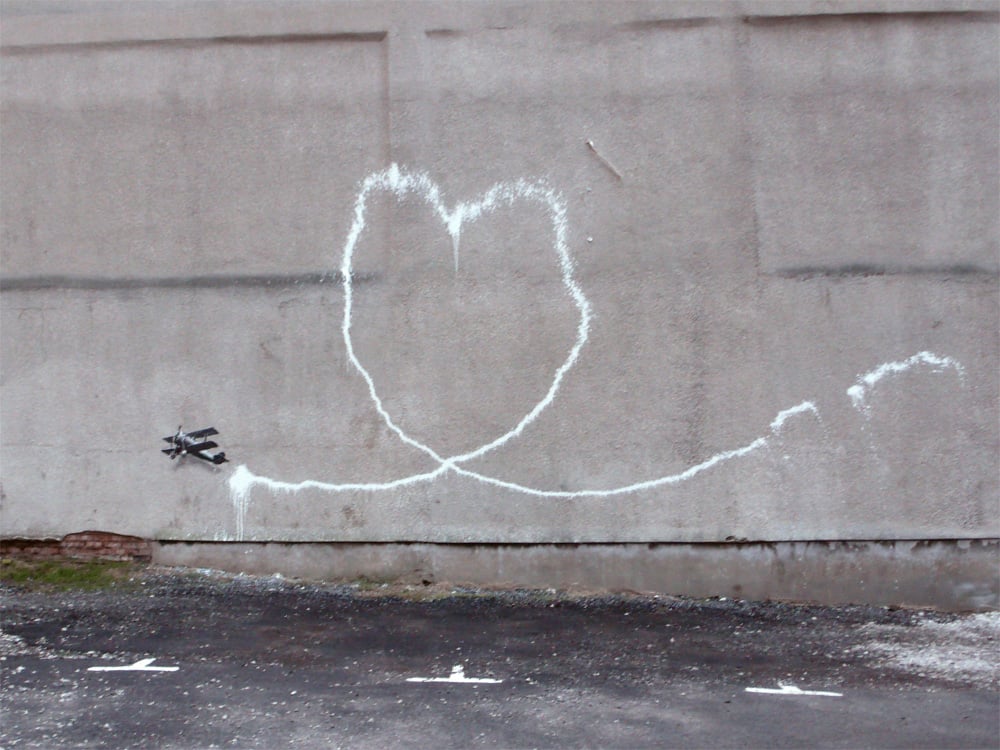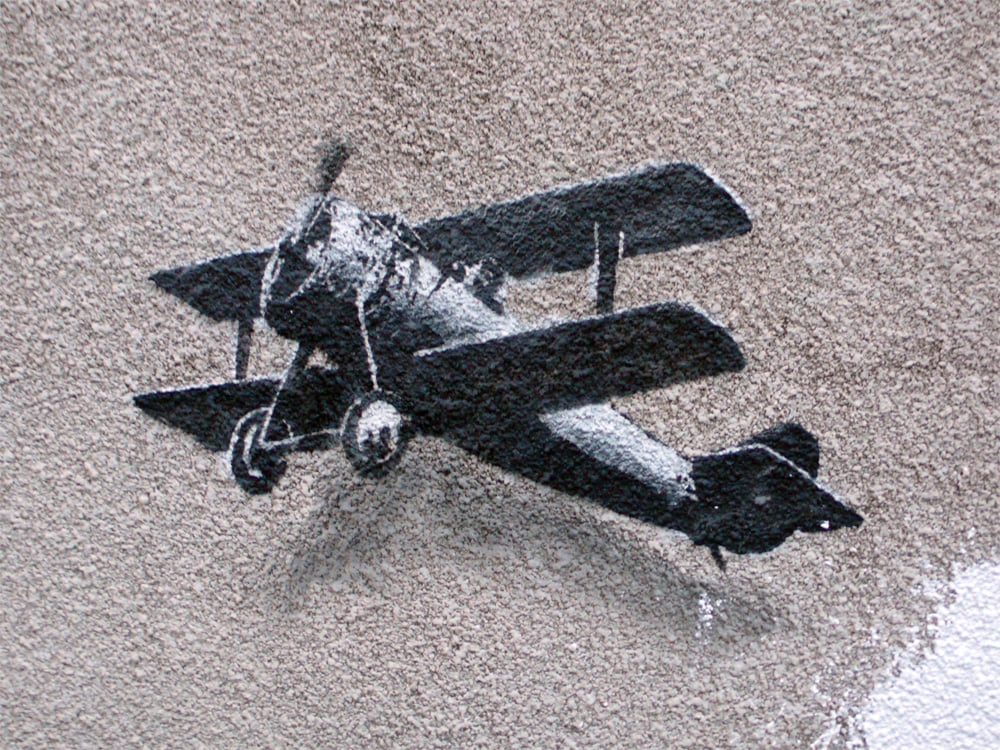Art World
Banksy Mural in Liverpool Removed for Street Art Museum
Some residents are angry at the removal of the artwork.

Some residents are angry at the removal of the artwork.

Henri Neuendorf

Banksy’s mural Love Plane (2011) was removed from the wall of a parking lot in Liverpool, England, on Saturday. According to a note left in its place, the artwork will become part of the collection of a new street art museum in the city.
Depicting a biplane leaving a heart-shaped trail behind it, the work was “salvaged” by the Sincura Group, the same group that organized the controversial “Stealing Banksy” auction, which was dismissed by the artist as “disgusting” in April 2014.
In a statement posted on its website, the company announced that it saved the artwork from destruction, and that it would return the work to the city after restoration.
The Sincura Group and property developers North Property Global, who are working together on the museum, have “salvaged” six Banksy works from around Liverpool for the museum’s collection, including a picture of rat brandishing a gun, which was recently taken from a pub in the city center.

Banksy Love Plane (2011) (detail). Photo: banksy.co.uk.
Some residents have been angered by the forced removal of the works. Speaking with the BBC, local graffiti artist Sam Fishwick argued that street art is defined by its context. “It’s not street art anymore of it’s hung up in a museum,” he said. “It’s raw, it’s gritty, it’s on the street. It’s not meant to be there. When you go and see it in a gallery it loses its charm, it loses its character.”
Peter McInnes, however, founder of North Property Global, which is working with the Sincura Group to open the street art museum by early 2018, defended the plans. McInnes told the BBC that the gallery is “a great chance to reclaim” art that is at risk of destruction.
“It stirs a lot of emotions,” he conceded, “but my answer to that would be—the gun-toting rat, which is one of the biggest Banksys ever painted, would have been lost forever. It was badly damaged and if we hadn’t restored it, you’d have seen it in magazines and that’s it. In the museum it would be seen by everybody and enjoyed by everybody.”